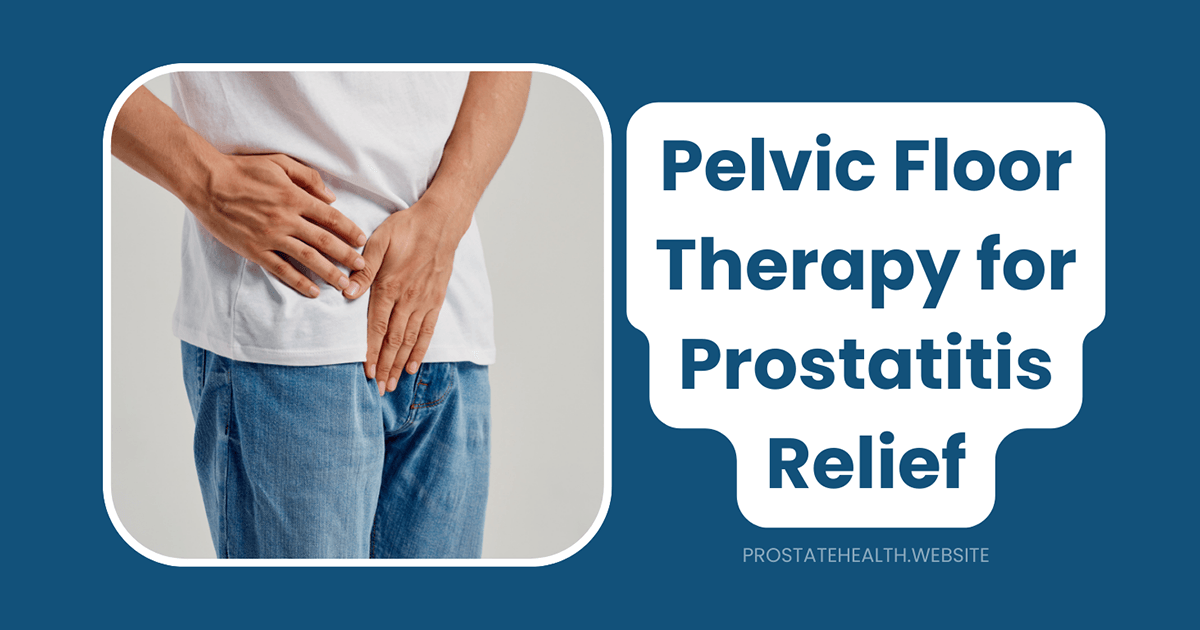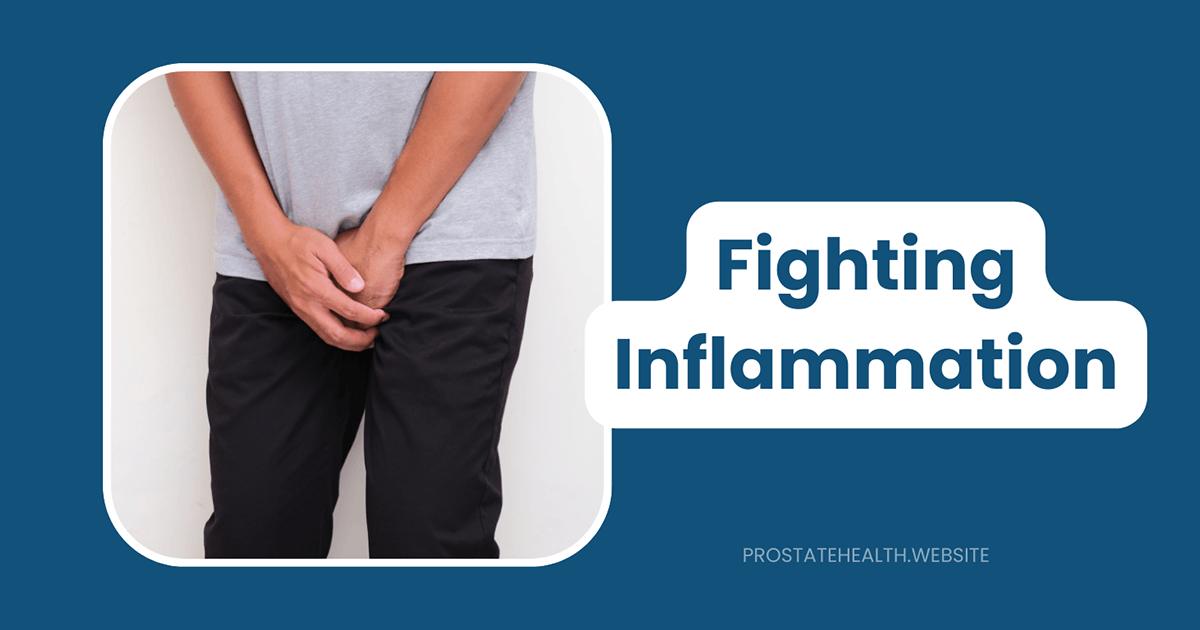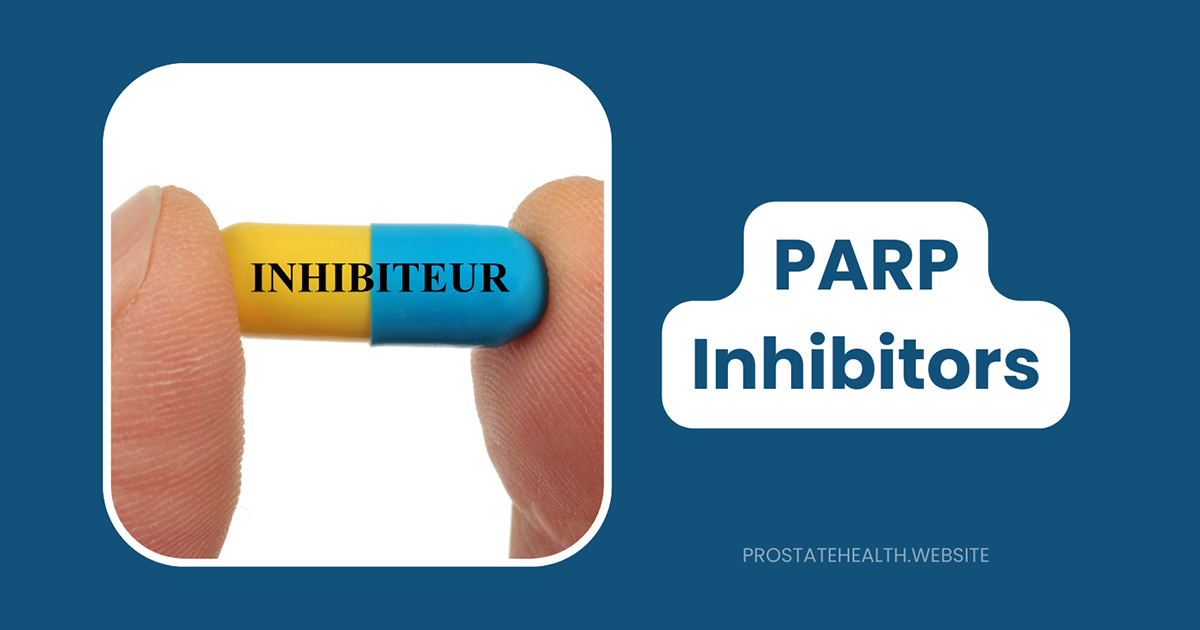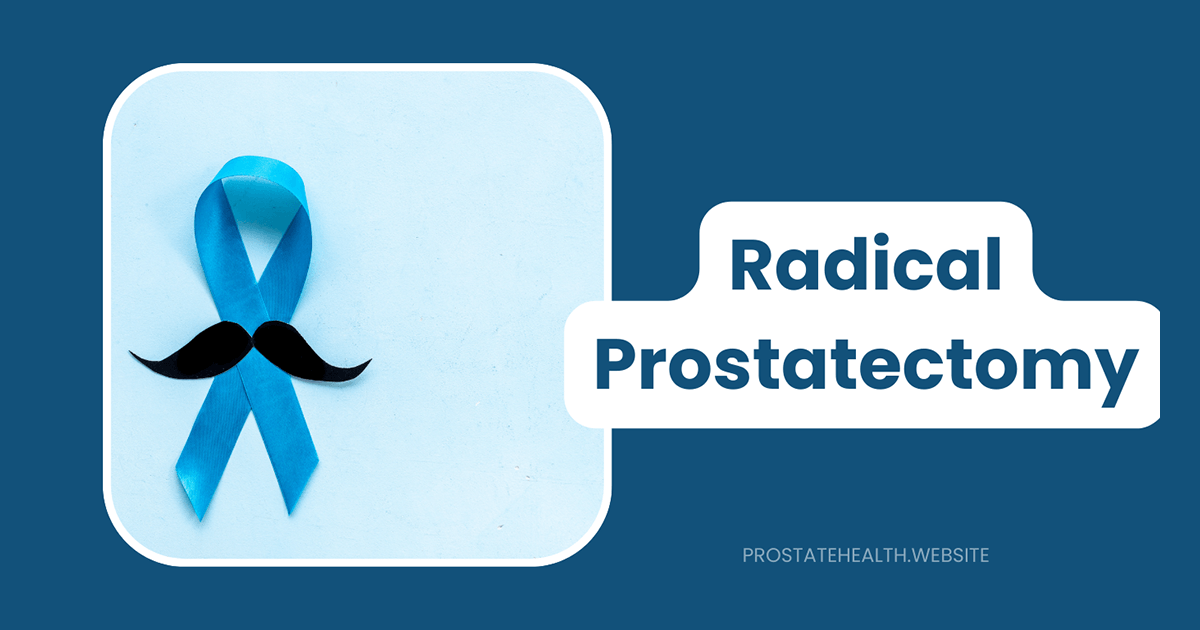BPH Treatment Side Effects and How to Manage Them
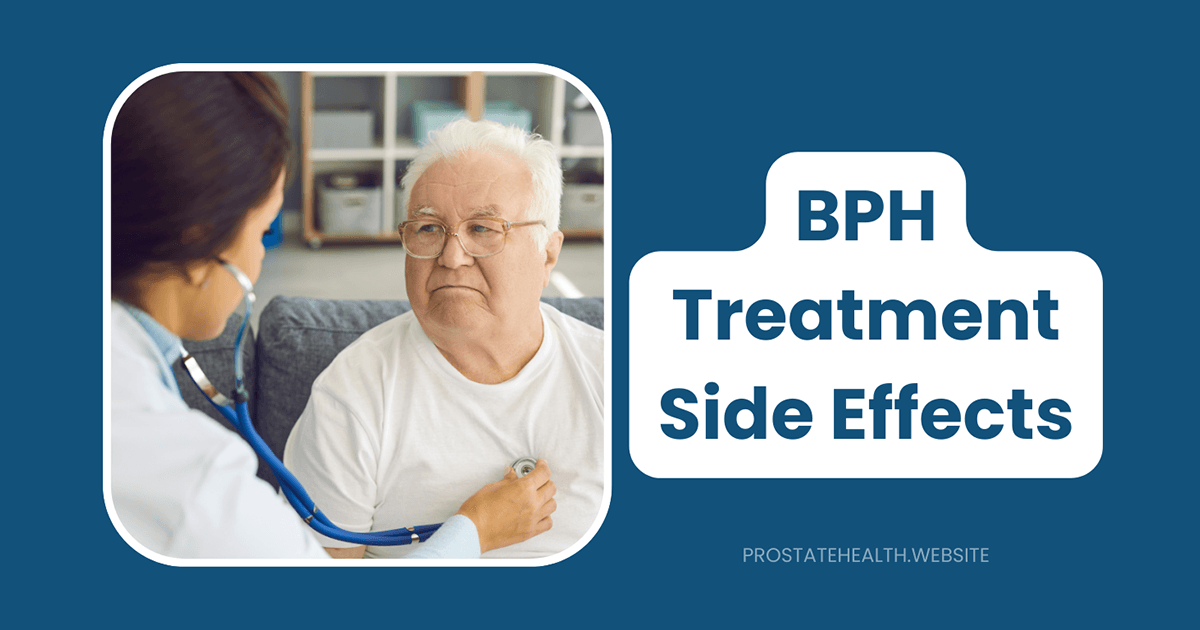
If you’re one of the millions of men dealing with benign prostatic hyperplasia (BPH), finding effective treatment is crucial for improving your quality of life. However, all BPH treatments—whether medications or procedures—come with potential side effects that can impact your daily life and well-being.
“Understanding potential side effects before starting treatment allows you to make informed decisions and better manage any issues that arise,” explains Dr. Robert Chen, urologist. “Many side effects can be effectively managed or minimized with the right approach.”
This comprehensive guide explores the common side effects of various BPH treatments and provides practical strategies for managing them, helping you navigate your treatment journey with confidence and comfort.
Medication Side Effects and Management
Alpha-Blockers
Alpha-blockers (tamsulosin, alfuzosin, silodosin, doxazosin, terazosin) work by relaxing the muscles in the prostate and bladder neck, improving urine flow. They’re often the first-line medication for BPH.
Common Side Effects:
- Orthostatic Hypotension (Dizziness When Standing)
- Frequency: Affects 5-10% of patients, more common with older medications like doxazosin and terazosin
- Management Strategies:
- Take medication at bedtime
- Rise slowly from sitting or lying positions
- Stay well-hydrated
- Avoid alcohol, which can worsen this effect
- Consider switching to a more selective alpha-blocker like tamsulosin or silodosin if symptoms persist
- Fatigue and Headache
- Frequency: Affects 5-15% of patients
- Management Strategies:
- Take medication at bedtime to sleep through side effects
- Stay hydrated
- Over-the-counter pain relievers may help with headaches
- Symptoms often improve after a few weeks of treatment
- Ejaculatory Disorders (Retrograde Ejaculation)
- Frequency: Varies by medication; affects up to 28% with tamsulosin and up to 90% with silodosin
- Management Strategies:
- Discuss with your doctor about switching to alfuzosin, which has lower rates of ejaculatory problems
- Consider if this side effect is acceptable based on your personal priorities
- Remember this doesn’t affect sexual pleasure or erectile function, just ejaculate volume
- Nasal Congestion
- Frequency: Affects 5-10% of patients
- Management Strategies:
- Over-the-counter nasal decongestants (short-term use only)
- Nasal saline sprays
- Symptoms often improve over time
- Intraoperative Floppy Iris Syndrome (IFIS)
- Frequency: Occurs in 33-86% of patients taking alpha-blockers who undergo cataract surgery
- Management Strategies:
- Inform all healthcare providers, especially eye doctors, about alpha-blocker use
- Ophthalmologists can take precautions if they know you’re on these medications
“I experienced dizziness when I first started tamsulosin,” shares Michael, 62. “My doctor suggested taking it at bedtime, and that made a huge difference. After about two weeks, the dizziness subsided completely.”
5-Alpha Reductase Inhibitors (5-ARIs)
5-ARIs (finasteride, dutasteride) work by blocking the conversion of testosterone to dihydrotestosterone (DHT), which causes prostate growth. They actually shrink the prostate over time.
Common Side Effects:
- Sexual Side Effects
- Erectile Dysfunction
- Frequency: Affects 5-8% of patients
- Management Strategies:
- Discuss with your doctor about adding a PDE5 inhibitor like tadalafil
- Consider if benefits outweigh this side effect based on your priorities
- Some men find these effects diminish over time
- Decreased Libido
- Frequency: Affects 5-10% of patients
- Management Strategies:
- Open communication with partners about treatment effects
- Counseling or sex therapy if significantly impacting relationship
- Discuss with your doctor if benefits outweigh this side effect
- Reduced Ejaculate Volume
- Frequency: Common, affecting up to 50% of patients
- Management Strategies:
- Understanding this doesn’t affect pleasure or orgasm intensity
- Discussing fertility implications if relevant
- Erectile Dysfunction
- Gynecomastia (Breast Enlargement/Tenderness)
- Frequency: Affects 1-2% of patients
- Management Strategies:
- Discuss with your doctor if severe or bothersome
- Medication adjustments or additional treatments may help
- In rare cases, switching treatments may be necessary
- Mood Changes (Depression, Anxiety)
- Frequency: Reported in some patients, though causality is debated
- Management Strategies:
- Monitor mood changes and report to your doctor
- Consider mental health support if needed
- Discuss alternative treatments if severe
- Post-Finasteride Syndrome
- Frequency: Rare but reported
- Description: Persistent sexual, neurological, and physical symptoms after discontinuing medication
- Management Strategies:
- Report any concerning symptoms to your healthcare provider
- Seek specialized care if symptoms persist after stopping medication
- PSA Level Reduction
- Frequency: Occurs in virtually all patients
- Management Strategies:
- Understand that PSA levels will decrease by approximately 50%
- Healthcare providers should double PSA values for cancer screening
- Regular monitoring as recommended by your doctor
“The sexual side effects of finasteride were concerning at first,” reports James, 58. “But weighing the benefits against the side effects, I decided to continue. After about six months, some of the side effects diminished, and the improvement in my urinary symptoms has been significant.”
Combination Therapy (Alpha-Blocker + 5-ARI)
Combination therapy is often used for men with larger prostates or at risk for BPH progression.
Side Effect Considerations:
- May experience side effects from both medication classes
- Some side effects may be additive
- Benefits often outweigh the increased side effect risk for men with moderate-to-severe symptoms and larger prostates
Management Strategies:
- Sequential introduction (starting one medication, then adding the second) can help identify which medication causes specific side effects
- Regular follow-up with your healthcare provider to assess benefit-to-side-effect ratio
- Dose adjustments may help minimize side effects while maintaining benefits
Phosphodiesterase-5 (PDE5) Inhibitors
Tadalafil (Cialis) is FDA-approved for treating both BPH and erectile dysfunction.
Common Side Effects:
- Headache
- Frequency: Affects 10-15% of patients
- Management Strategies:
- Over-the-counter pain relievers
- Staying well-hydrated
- Symptoms often diminish over time
- Flushing
- Frequency: Affects 5-10% of patients
- Management Strategies:
- Usually temporary and mild
- Avoiding alcohol and spicy foods, which can worsen flushing
- Back Pain/Myalgia
- Frequency: Affects 5-8% of patients
- Management Strategies:
- Over-the-counter pain relievers
- Gentle stretching
- Usually improves with continued use
- Indigestion
- Frequency: Affects 5-10% of patients
- Management Strategies:
- Taking with food
- Avoiding large, fatty meals
- Over-the-counter antacids if needed
“Tadalafil has been a game-changer for me,” shares Robert, 65. “I experienced mild headaches initially, but they disappeared after a couple of weeks. Now I get the benefit of improved urinary symptoms and better erectile function with minimal side effects.”
Surgical and Minimally Invasive Procedure Side Effects
Transurethral Resection of the Prostate (TURP)
TURP is considered the gold standard surgical treatment for BPH, involving removal of prostate tissue through the urethra.
Common Side Effects:
- Retrograde Ejaculation
- Frequency: Affects 75-80% of patients
- Management Strategies:
- Understanding this doesn’t affect pleasure or erectile function
- Fertility preservation options if relevant
- Psychological preparation before procedure
- Bleeding
- Frequency: Common during recovery
- Management Strategies:
- Following post-operative instructions carefully
- Avoiding blood thinners as directed
- Increasing fluid intake to keep urine flowing
- Contacting your doctor if bleeding is heavy or contains clots
- Temporary Urinary Incontinence
- Frequency: Affects 5-10% of patients initially
- Management Strategies:
- Pelvic floor exercises
- Scheduled voiding
- Protective undergarments if needed
- Usually resolves within weeks to months
- Urethral Stricture/Bladder Neck Contracture
- Frequency: Affects 1-2% of patients
- Management Strategies:
- Follow-up with your urologist as scheduled
- Report difficulty urinating promptly
- May require additional procedures if severe
- Erectile Dysfunction
- Frequency: Affects 5-10% of patients
- Management Strategies:
- Discuss treatment options with your doctor
- PDE5 inhibitors are often effective
- Consider counseling if significant distress occurs
“After my TURP, I experienced some bleeding for about a week,” reports Thomas, 70. “Following my doctor’s advice to drink plenty of water and rest helped it resolve quickly. The retrograde ejaculation was something I was prepared for, and it hasn’t affected my relationship with my wife.”
Laser Therapies (HoLEP, GreenLight PVP)
Laser therapies use various types of laser energy to remove or vaporize prostate tissue.
Common Side Effects:
- Retrograde Ejaculation
- Frequency: Affects 70-80% with HoLEP, slightly lower with GreenLight
- Management: Similar to TURP
- Temporary Urinary Symptoms
- Frequency: Common in first few weeks
- Management Strategies:
- Increased fluid intake
- Avoiding bladder irritants (caffeine, alcohol)
- Medication for urgency if prescribed
- Usually improves within 2-4 weeks
- Bleeding
- Frequency: Less than TURP but still common
- Management: Similar to TURP, though typically less severe
- Erectile Dysfunction
- Frequency: Lower than TURP, affects 3-5% of patients
- Management: Similar to TURP
“I chose GreenLight laser therapy because of the lower risk of bleeding,” shares William, 68. “I still had some burning during urination for about two weeks, but it was manageable with over-the-counter pain relievers and drinking plenty of water.”
UroLift (Prostatic Urethral Lift)
UroLift uses small implants to hold enlarged prostate tissue away from blocking the urethra.
Common Side Effects:
- Pelvic Pain/Discomfort
- Frequency: Affects up to 20% of patients
- Management Strategies:
- Over-the-counter pain relievers
- Warm sitz baths
- Usually resolves within 2-4 weeks
- Blood in Urine
- Frequency: Common initially
- Management Strategies:
- Increased fluid intake
- Avoiding strenuous activity initially
- Usually resolves within days to weeks
- Urinary Urgency/Frequency
- Frequency: Affects up to 50% initially
- Management Strategies:
- Timed voiding
- Avoiding bladder irritants
- Usually improves within 2-4 weeks
- Urinary Tract Infection
- Frequency: Affects 5-7% of patients
- Management Strategies:
- Completing full course of antibiotics if prescribed
- Increased fluid intake
- Contacting your doctor if symptoms worsen
“The UroLift procedure was attractive to me because it preserves sexual function,” says Richard, 59. “I experienced some discomfort and urgency for about two weeks, but it was worth it to avoid the ejaculatory problems associated with other procedures.”
Rezūm Water Vapor Therapy
Rezūm uses water vapor (steam) to destroy prostate tissue, which the body then absorbs naturally.
Common Side Effects:
- Urinary Retention
- Frequency: Affects up to 23% of patients
- Management Strategies:
- Temporary catheter (typically 3-5 days)
- Following post-procedure instructions carefully
- Contacting your doctor if unable to urinate after catheter removal
- Urinary Symptoms (Frequency, Urgency, Discomfort)
- Frequency: Common in first few weeks
- Management Strategies:
- Over-the-counter pain relievers
- Increased fluid intake
- Avoiding bladder irritants
- Usually improves within 2-4 weeks
- Blood in Urine
- Frequency: Affects about 7% of patients
- Management: Similar to other procedures
- Urinary Tract Infection
- Frequency: Affects 7-8% of patients
- Management: Similar to UroLift
“I chose Rezūm because it had a lower risk of sexual side effects than TURP,” explains Michael, 62. “I did need a catheter for about four days, which was uncomfortable but manageable. After that, my symptoms gradually improved over about 6-8 weeks.”
General Strategies for Managing BPH Treatment Side Effects
Regardless of which treatment you choose, these general strategies can help you manage side effects more effectively:
1. Open Communication with Healthcare Providers
- Report side effects promptly: Don’t wait until they become severe
- Be specific about impact: Explain how side effects affect your daily life
- Discuss benefit-to-side-effect ratio: Regular reassessment helps optimize treatment
- Ask about alternatives: If side effects are intolerable, other options may be available
2. Lifestyle Modifications
- Stay hydrated: Adequate fluid intake helps flush the urinary system
- Avoid bladder irritants: Caffeine, alcohol, spicy foods, and artificial sweeteners can worsen urinary symptoms
- Time your fluid intake: Drink more in the morning and afternoon, less in the evening
- Practice double voiding: Urinate, wait a moment, then try again to ensure complete emptying
- Maintain physical activity: Regular exercise improves overall urinary health
3. Pelvic Floor Exercises
- Strengthen pelvic muscles: Can improve control over urination
- Technique matters: Learn proper Kegel exercise technique from a healthcare provider
- Consistency is key: Regular practice provides the best results
- Patience required: Benefits may take weeks to months to become noticeable
4. Psychological Support
- Acknowledge emotional impact: Treatment side effects can affect mental well-being
- Seek support: Consider support groups, counseling, or therapy if needed
- Include partners: Open communication with partners about treatment effects
- Set realistic expectations: Understanding the typical course of side effects can reduce anxiety
5. Medication Timing and Adjustments
- Optimal timing: Taking medications at specific times can minimize side effects
- Dose adjustments: Sometimes lower doses can maintain benefits with fewer side effects
- Combination approaches: Adding medications to counteract side effects may be helpful
- Treatment holidays: In some cases, temporary breaks from medication may be considered
Making Informed Treatment Decisions
When choosing a BPH treatment, consider these factors to minimize side effect impact:
1. Prioritize Your Concerns
Different men have different priorities. Consider what matters most to you:
- Sexual function preservation: UroLift and Rezūm generally have less impact on sexual function
- Rapid symptom relief: Alpha-blockers and surgical options provide quicker relief
- Long-term durability: TURP and HoLEP have excellent long-term outcomes
- Avoiding catheterization: UroLift has lower catheterization rates than other procedures
- Minimizing recovery time: Medications and minimally invasive procedures require less downtime
2. Consider Your Personal Risk Factors
Your individual characteristics affect side effect risk:
- Age: Older men may be more susceptible to certain side effects
- Other medications: Potential interactions can increase side effect risk
- Prostate size: Larger prostates may respond better to certain treatments
- Overall health: Existing conditions may influence treatment suitability
- Sexual activity: Current sexual function and priorities should inform decisions
3. Understand the Timeline
Knowing when side effects typically occur and resolve can help with planning:
- Medication side effects: Often appear within days to weeks of starting treatment
- Procedural side effects: Most intense in the first few weeks after treatment
- Resolution patterns: Many side effects improve or resolve with time
- Long-term considerations: Some effects may be permanent (e.g., retrograde ejaculation after TURP)
Special Considerations for Specific Populations
Older Adults (75+)
- Increased sensitivity: May experience more pronounced side effects from medications
- Fall risk: Alpha-blockers can increase fall risk through orthostatic hypotension
- Cognitive effects: Some medications may affect cognitive function
- Recovery time: May need longer recovery after procedures
- Management strategies:
- Start with lower medication doses
- More frequent monitoring
- Fall prevention strategies
- Consider home support during recovery from procedures
Men with Cardiovascular Conditions
- Medication interactions: Alpha-blockers can interact with blood pressure medications
- Surgical risks: May have higher anesthesia risks with some procedures
- Management strategies:
- Careful medication selection and monitoring
- Consider minimally invasive options
- Coordinate care between urologist and cardiologist
Sexually Active Men
- Impact assessment: Understand how different treatments affect sexual function
- Fertility considerations: Some treatments affect ejaculation and fertility
- Management strategies:
- Prioritize treatments with lower sexual side effect profiles if important
- Consider sperm banking before treatments with high rates of ejaculatory dysfunction
- Discuss erectile dysfunction treatments if needed
When to Seek Immediate Medical Attention
While most side effects are manageable, some require prompt medical attention:
- Inability to urinate: Complete urinary retention requires emergency care
- Severe bleeding: Heavy bleeding or large clots
- High fever: May indicate infection
- Severe pain: Not controlled by recommended pain management
- Allergic reactions: Hives, rash, swelling, or difficulty breathing
The Future of BPH Treatment and Side Effect Management
Research continues to improve BPH treatments and reduce side effects:
- Newer medications: Targeting different pathways with potentially fewer side effects
- Refined surgical techniques: More precise tissue removal with less collateral damage
- Advanced minimally invasive options: Expanding options with favorable side effect profiles
- Personalized medicine approaches: Using genetic and other markers to predict who will respond best to specific treatments with minimal side effects
- Improved side effect management: Better strategies for addressing treatment complications
Conclusion: Finding Your Balance
Managing BPH is about finding the right balance between symptom relief and side effect burden. By understanding potential side effects before starting treatment, you can make informed decisions and be better prepared to manage any issues that arise.
Remember that everyone’s experience is unique—what works well for one person may not be ideal for another. Working closely with your healthcare provider to monitor your response to treatment and adjust as needed is the key to successful BPH management.
With the right approach, most men can find a treatment option that effectively controls their BPH symptoms while maintaining a good quality of life. Side effects, when they occur, can often be managed effectively with proper strategies and support.
Frequently Asked Questions
Many medication side effects improve within 2-4 weeks as your body adjusts to the treatment. Sexual side effects from 5-ARIs may persist as long as you take the medication. If side effects don’t improve or worsen over time, consult your healthcare provider.
Never stop prescription medications without consulting your healthcare provider. Suddenly stopping some medications can cause problems. If you’re experiencing troublesome side effects, your doctor may be able to adjust your dose, switch to a different medication, or suggest strategies to manage the side effects.
It depends on the treatment. Sexual side effects from medications typically resolve when the medication is stopped (though there are rare reports of persistent effects). Retrograde ejaculation after TURP or HoLEP is usually permanent. Erectile dysfunction following procedures is often temporary but can be permanent in some cases.
There’s no single “best” treatment for everyone. Minimally invasive options like UroLift and Rezūm generally have fewer sexual side effects than TURP but may not be as effective for severe symptoms or very large prostates. Medications avoid surgical risks but require daily use and have their own side effect profiles. The best treatment balances effectiveness with acceptable side effects for your specific situation.
Yes, in many cases. Staying hydrated, timing fluid intake appropriately, avoiding bladder irritants, maintaining physical activity, and practicing pelvic floor exercises can all help minimize certain side effects. These approaches work best when combined with proper medical management.
External Resources:
- American Urological Association – BPH Guidelines
- Urology Care Foundation – BPH Treatment Options
- National Institute of Diabetes and Digestive and Kidney Diseases – Prostate Enlargement

